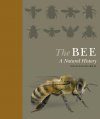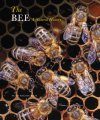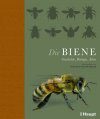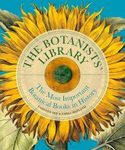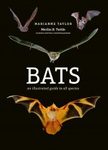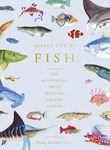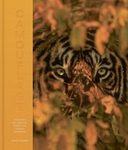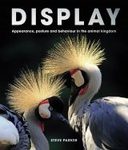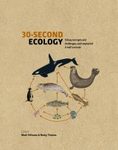"The natural history of solitary, bumble, honey and stingless bees is as gripping as our lengthy alliance, as urban beekeeper Noah Wilson-Rich and contributors show in this charming compilation. They cover evolution, biology (including a unique proboscis made of two organs), behaviours (such as honey bee 'quacking'), the causes of catastrophic die-offs, and more."
– Barbara Kiser, Nature
"You don't have to be a scientist or even a beekeeper to understand the material or to grasp the importance of bees to our way of life. The author's passion for his subject is obvious without being weighty, the diagrams are on point, and the photographs are a joy [...] The Bee: A Natural History illustrates the entire story in a quick but fascinating portrait. Be sure to put this one on your wish list."
– Rusty Burlew, Honey Bee Suite
"A well-illustrated introduction to the biology of bees."
– Ian Paulsen, Birdbooker Report
"A comprehensive guide to the bee and covers every topic imaginable, including bee evolution, behaviour, beekeeping, anatomy and reproduction. Each section in the book is filled with stunning, detailed photography that compliments the informative accompanying text [...] You could spend hours simply perusing the pictures in this book and finding something new every time. The Bee: A Natural History is a perfect coffee-table book, but offers so much more than pretty pictures. The author is clearly an expert in his field and the chapters go into quite a lot of depth, without alienating the reader. It strikes an appropriate balance between appearance and content."
– Bookbag
"This book is a valuable addition the bookshelves of anyone with an interest and love of the bee."
– Sue Closs, Welsh Beekeeper
"By contrasting the biologies and behaviours of some of the solitary bees, stingless bees, masons, carpenters and bumbles, the author presents an interesting and readable handbook on this insect icon and its wild relatives."
– Richard Jones, BBC Wildlife
"While most people are familiar with the European honeybees that populate commercial hives, the rest of world of bees is probably less known. The Bee: A Natural History by Noah Wilson-Rich sets out to fill you in on the rest of the story [...] If you'd like to get to know your neighborhood bees better, this book is a good place to start."
– Tom Palmer, Lakeland Ledger
"A compendium of knowledge on the 20,000 or so bee species in the world and the state of humans' relationship with them throughout history. It's fertile soil for any bee inquiry you want to make."
– Susan Clotfelter, Denver Post
"Because humans have observed and cultivated social bees for millennia [...] we know enough about those little creatures to fill many books. Open to any page of this one and you will get a short, sweet primer on some aspect of bee biology, behavior, husbandry, or ecology [...] For the reader whose appetite for bee-stuff has been whetted, there's a good bibliography that you can pursue to fill in the fine points. If there are no books on bees in your house, this is the first one you should buy. And if bees could read, I'm sure there would be a copy of this book in every hive."
– Laurence A. Marschall, Natural History
"The Bee is a quick and easy-to-read overview of a topic that would be equally useful for the layperson who knows little about bees and the beekeeper who wants to learn about bees from a more general perspective. Be prepared for a visual treat."
– Roberta Gibson, Wild About Ants
"An everyman's guide to all things bee [...] The Bee: A Natural History by Noah Wilson-Rich is fascinating, fun, and beautiful, a book that is accessible enough for anyone with a general interest, but interesting enough for those with longstanding bee fever. The writing and layout are straightforward and understandable, and the many beautiful pictures should definitely make the book, broad as it is, appealing to a broad audience."
– Mary Bowling, Englewood Review of Books
"This beautifully designed book has great photos and a very appealing look. Each section is very short and gives you a summary of one aspect of bees' lives."
– Trumpeter
"Enjoy this lovely book. It might lead you into unknown depths of bee life where you never expected to go."
– A.C., Wildlife Activist
"For the novice who has an interest in bees, this book presents a remarkable breadth of topics and provides an entry point to their fascinating biology."
– Gard W. Otis, Great Lakes Entomologist
"It is an engaging, wide-ranging introduction to the natural history of the bee that I found to be a real 'page turner.' One can learn a great deal about bees from the book and, as such, it can serve as an excellent introductory text book on the subject for both formal and informal students of entomology [...] [T]his beautiful book is a real bargain. Bottom line: highly recommended."
– C.P. Dufault, Bulletin of the Entomological Society of Canada







